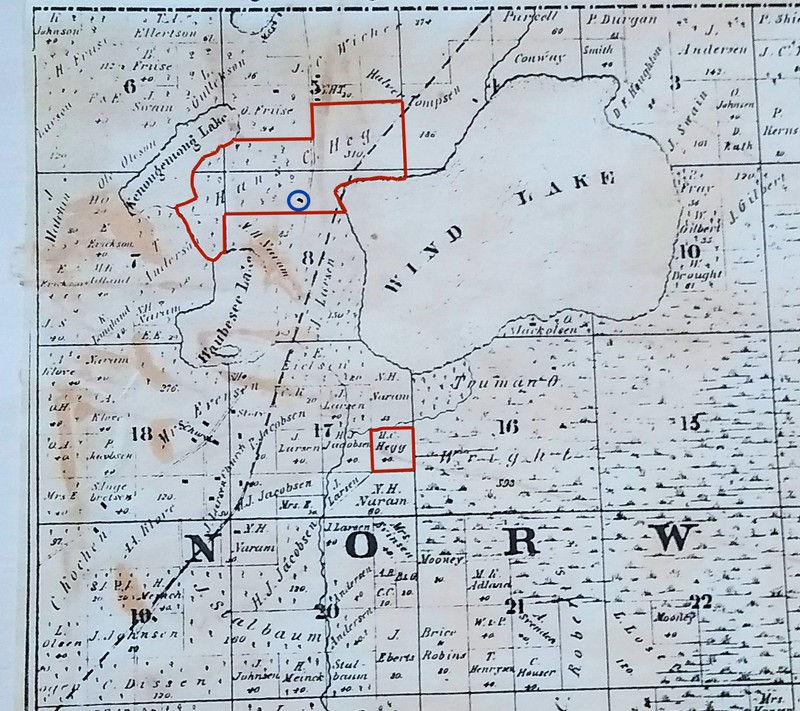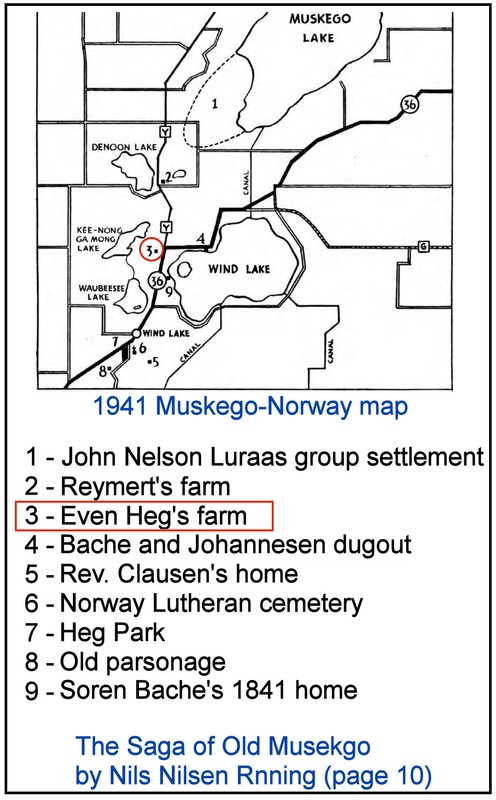Even Heg barn
Introduction
Text-to-speech Audio
Even Heg was a successful innkeeper in Lier, Norway. His neighbors in Lier thought he was crazy when he sold his property and took his family to America. As a Haugean, Heg savored the religious freedom that America offered. Even Heg was a natural leader. He first met Reymert, Bache and Johannesen in America. These four quickly bonded and worked together to build a colony at Muskego-Norway. Heg rallied the community to help build a large barn. The largest structure in the area, Heg’s barn was used as a community center. More than a thousand immigrants sheltered there on their first stop in Wisconsin. After resting from their arduous journey, many found work helping with fall harvests, at Denoon’s sawmill or helping build the plank road from Wind Lake to Rochester. Heg’s barn served as a hospital during epidemics. Eventually, another structure was built on the edge of the settlement to quarantine stricken settlers.
Heg, Johannesen, Bache and Reymert worked together to buy a printing press in Philadelphia, which they moved to Heg’s home. His son, Hans, helped work the press lever and feed in paper, creating the Nordlyset, the first Norwegian language newspaper in America. Nordlyset takes its names from the Norwegian word for “Northern lights,” the beautiful, colorful aurora borealis in the northern sky. They used the paper to illuminate their fellow countrymen about America, its institutions and politics and to share news from their homeland. Reymert became editor and the press was moved to his home in Denoon, where it became his political soapbox.
Images
Hans Heg property (in red) and barn (in blue) on Town of Norway (WI) plat map, 1858

Even Heg's barn

Backstory and Context
Text-to-speech Audio
When Even Heg built his large barn, church services moved from Johannesen and Bache’s trading post to the barn to accommodate the crowds. Both Eielsen and Clausen performed services in Heg’s barn.
In October 1843, Clausen was ordained by a German-Lutheran pastor from Milwaukee and a month later Clausen and the Muskego congregation decided to build a church on the top of the tallest hill near Wind Lake. Construction began the following year. Prior to that
Clausen was using Even Heg's big barn to hold worship services . . . In this barn, the first Norwegian couples to be married by a Norwegian pastor in America (were) John Evenson Molee to Anne Jacobsdatter Einong, and Hans Tveito to Aslaug Jacobsdatter Einong, all Tinndoler. The double wedding was a memorable occasion for everyone.[1]
Cite This Entry
Palecek, Mike. "Even Heg barn." Clio: Your Guide to History. August 11, 2024. Accessed April 22, 2025. https://theclio.com/entry/182962
Sources
[1] Holand, Hjalmar Rued, Rosholt, Malcolm, Nelson Gourley, Deb, et. al. History of the Norwegian settlements : a translated and expanded version of the 1908 De norske settlementers historie and the 1930 Den siste, (Waukon IA, 2006), page 50
Redding and Watson (1858) at Waterford Public Library
Rnning, Nils Nilsen. The Saga of Old Norway, page 10

